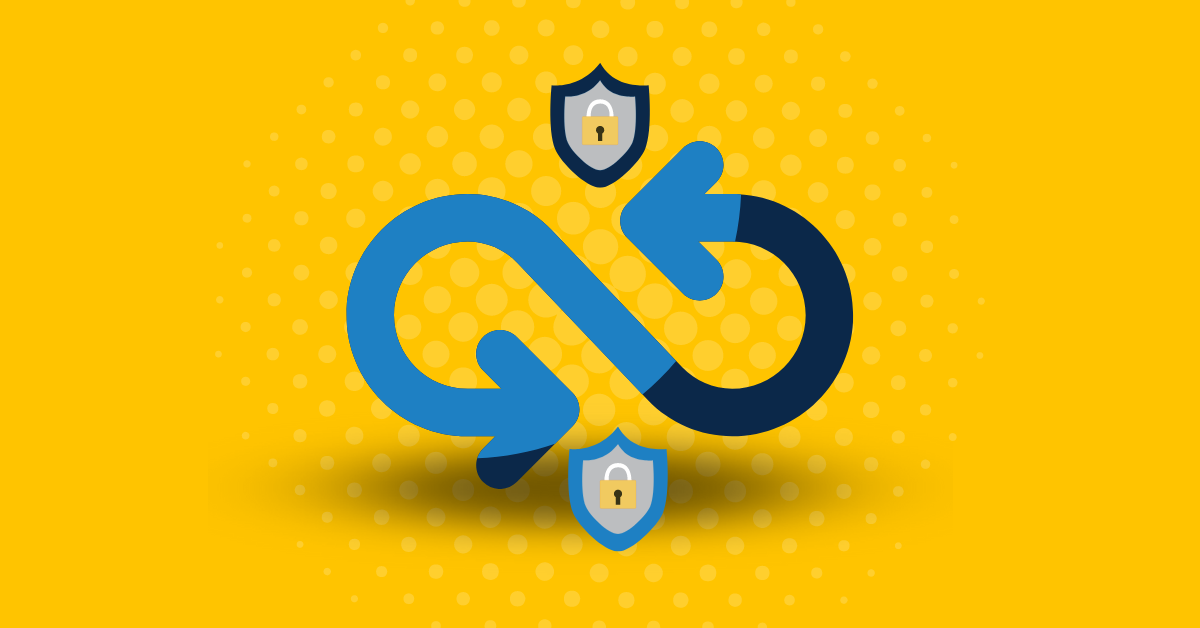
App production is an enormous endeavor. Pulling off the initial launch is one thing, but then it requires constant updates. Every update is labor-intensive, and developers often face pressure to push them out ASAP. When this happens, DevOps teams sometimes cut corners or forget to embed proper security practices into applications.
Before, there was simply no way around this. Testing, building, and releasing was a manual process. Then something called Continuous Integration and Continuous Delivery (CI/CD) stormed the scene.
Below, we’ll explain CI/CD and why code obfuscation is necessary in protecting business software and data. Then, we’ll explain why businesses should defend their CI/CD pipelines.
CI/CD revolutionized software production, enabling developers to iterate rapidly, automate critical tasks, and deliver updates faster. Overall, it levels up software quality and user experience. CI/CD is a crucial element in DevSecOps. Here’s a top-level view:
Ultimately, CI/CD describes an automated framework for creating, packaging, and deploying code to enhance software delivery. These steps happen with every new software update. It’s the combination of CI and CD where the magic happens — the two factors work in tandem to streamline development workflows, accelerate the feedback loop, and reduce the associated risks of large code releases. Here are a few of the top benefits of implementing CI/CD:
The benefits of these practices are outstanding, but it’s not all smooth sailing. Automated processes can inadvertently expose sensitive information and intellectual property.
To use a real-world example, remember the SolarWinds data breach? That was a direct result of a CI/CD pipeline attack, where hackers identified a backdoor within the existing network. They used that entry to alter code and send out a poisoned application that stole information from 18,000 clients.
Had SolarWinds employed significant obfuscation techniques, the unprecedented data breach would likely never have occurred.
A recent survey of 300 top IT professionals found fewer than 4 in 10 companies can detect code tampering. It’s difficult to spot, but it can be avoided with the proper habits. One of the best anti-tamper security methods is obfuscation.
In the CI/CD security context, obfuscation functions by transforming source code into unreadable gibberish while preserving its functionality.
It’s a technique that mitigates security risks like reverse engineering threats and unauthorized access to sensitive data. Code obfuscation makes it almost impossible for attackers to understand any of the logic, algorithms, or data structures embedded in the software.
When approaching obfuscation, developers can choose from a few runtime protection techniques. The more techniques that are layered on, the better.
No company wants to be the next SolarWinds. To prevent that outcome, organizations must begin incorporating obfuscation into their CI/CD frameworks. But it’s hard to know where to begin.
Many prominent companies have embraced holistic and successful CI/CD security strategies to safeguard their code and intellectual property. Below are a couple of examples.
Google uses comprehensive, cutting-edge DevOps features in their CI/CD pipeline. The company also offers great insight into their philosophy and the importance of addressing security concerns early in development. They also list a few of the preferred security services they’ve incorporated to improve their build environment security:
Another great example comes from the founder of the company Apriorit. Here, they explain how refusing to obfuscate explicit names and classes is one of the main points of cyberattacks.
They also provide excellent examples of specific security techniques, such as bytecode obfuscation and LLVM compilers as excellent app hardening methods. Along with this come a few best practices to be mindful of as companies build secure CI/CD pipelines through obfuscation:
The average cost of a data breach is $4.35 million. Most businesses can’t afford this, so protecting CI/CD pipelines isn’t a matter of choice. But it’s difficult to know where to begin, and doing it in-house requires a robust IT team, which many businesses can’t afford.
PreEmptive offers cutting-edge source code obfuscation tools with automated security checks. These tools seamlessly integrate into your CI/CD workflows, ensuring code remains secure from reverse engineering threats and unauthorized access.
The services offer a broad range of obfuscation techniques and runtime protection features, providing a comprehensive defense against existing and emerging security threats, hacks, and vulnerabilities. Reach out to one of our solutions engineers for a no-obligation conversation about your options for defending your CI/CD pipelines immediately.